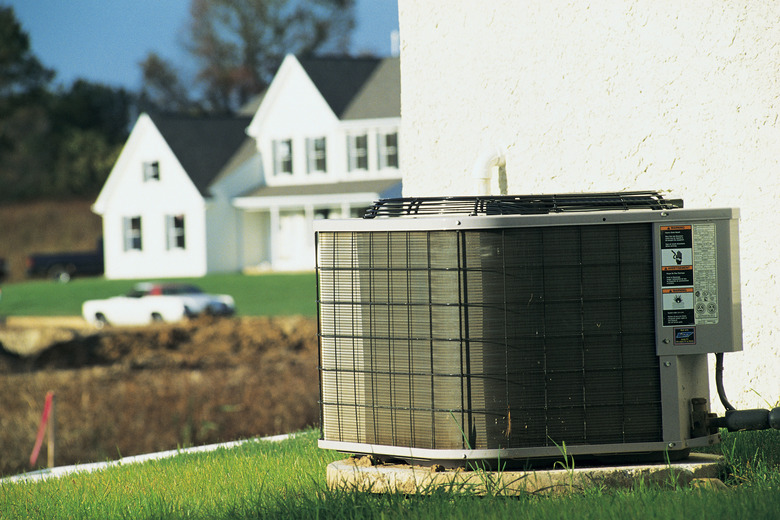Tips For Pouring Concrete Housekeeping Pads
Step 1
Purchase quality SPF — spruce/pine/fir — 2-by-4s to form the pad so you don't have to spend time trying to straighten warped lumber. Saw the boards for two sides — call them the back and front — 1-1/2 inches longer than their adjacent sideboards so that you may leave room to nail them together. Once the form is made, adjust it manually to make right angles in its corners. Perform this task by eye initially, then measure from corner to corner with a measuring tape to confirm your positioning is accurate. If the distance isn't equal, adjust them. When they're square, stake them with metal or wooden stakes. Check again to make sure the form is squared after staking it.
Step 2
- Purchase quality SPF — spruce/pine/fir — 2-by-4s to form the pad so you don't have to spend time trying to straighten warped lumber.
How Much Concrete to Use
Step 1
It's not uncommon for a home improvement store clerk or a concrete contractor to ask for your order in yards, by which they mean cubic yards. Calculate the amount yourself before shopping; add a couple of bags to your estimate to ensure you don't run short. Multiply the length of the pad in feet by the width of the pad in feet by the depth of the pad in inches; divide the total by 27 to learn the volume in cubic yards of your pad. Multiply by 1.05 to account for waste or spillage.
Leveling
Step 1
Pick up a magnesium screed at your local home improvement or hardware store. If your pad is larger than 10 square feet, pour the concrete a little at a time and even the surface with the screed as you go. Apply pressure on the back side — the side facing you as you push forward — and make 6- to 8-inch strokes as you pull the concrete level. Screed in sections for best results.
Step 2
- It's not uncommon for a home improvement store clerk or a concrete contractor to ask for your order in yards, by which they mean cubic yards.
- If your pad is larger than 10 square feet, pour the concrete a little at a time and even the surface with the screed as you go.
Smoothing
Step 1
Use a magnesium hand-float by applying light pressure on its back edge and pulling it over your pad in wide arcs. The hand-float helps you smooth your pad once it's been leveled. Check your work with a traditional or laser level. If you plan to sink lag bolts or screws into your pad, do it within an hour of pouring to avoid having to work against hardened concrete.
